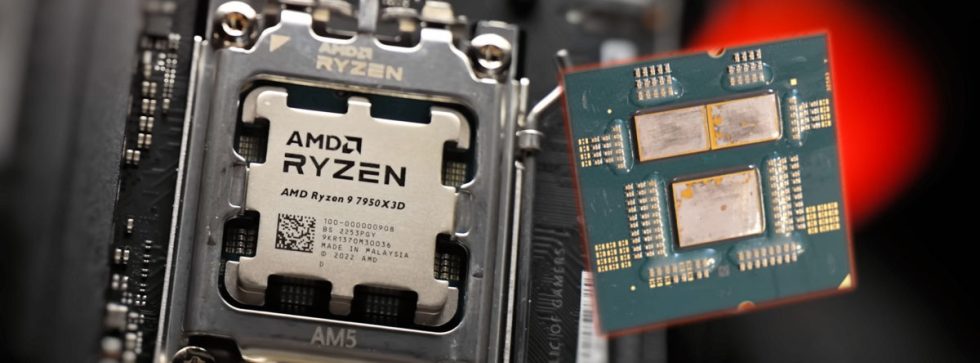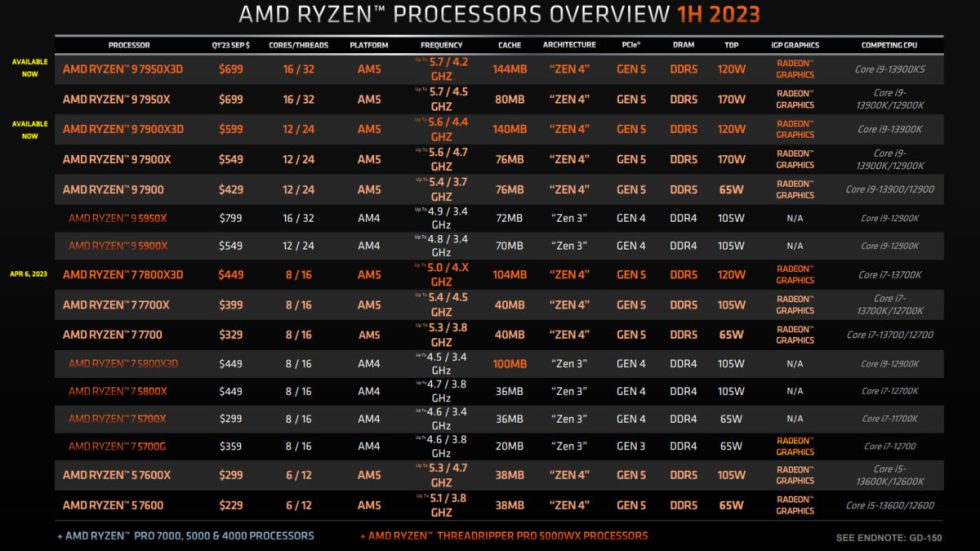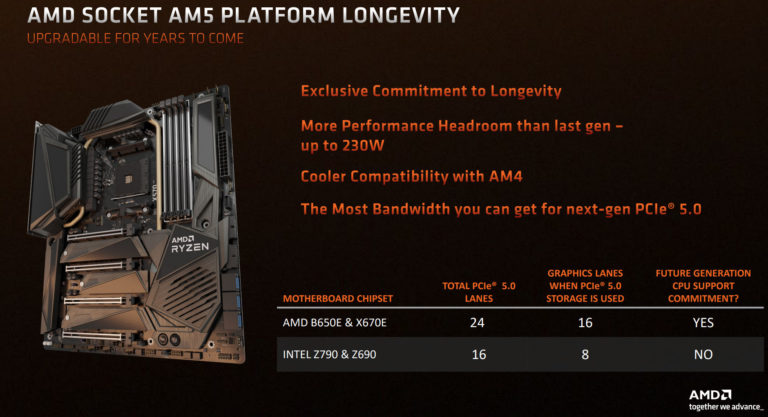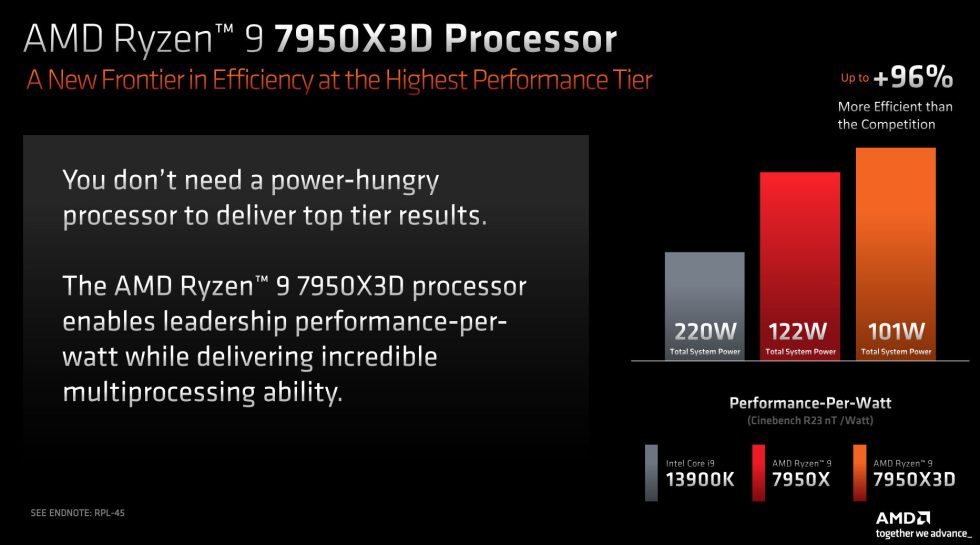AMD’s webinar is fully dedicated to the recent and upcoming introduction of 3D V-Cache SKUs. The company’s representatives explain the importance of this launch, the current position of these SKUs, and what are the advantages of choosing AMD’s platform over Intel’s. And in short, there’s quite a lot to mention now. Yes, there is certainly a lot of makleting involved, but our results also looked similar.

AMD Ryzen 7000X3D CPUs are faster than Intel’s 13th Gen Core series when gaming. The independent tests showed that AMD’s flagship Ryzen 9 7950X3D has a 3.8% advantage over the Intel Core i9-13900K and 2.7% more performance than the Core i9-13900KS. This is despite the fact that the latter CPU is clocked at 6.0 GHz ex-factory.According to the slide, the Ryzen 9 7950X3D officially competes with the Core i9-13900KS. Even the documentation in the new slide deck doesn’t include direct comparisons to either SKU, but that’s probably because the AMD comparisons were made before Intel introduced this Special Edition KS SKU.
Interestingly, AMD now has three Ryzen 9 SKUs competing with the Core i9-13900K: 7900X3D, 7950X, and 7900X. There is certainly a choice here for everyone. Also, those considering an Intel Core i9-12900K or Core i7-13700K should check if the upcoming Ryzen 7 7800X3D or Ryzen 9 5900 SKUs aren’t a better (and cheaper) choice.

The 600 platform’s support for the new PCIe standard is another important point that AMD is proud of. The X670E and B650E motherboard series simply have more PCIe lanes and no problem with the primary slot being limited to 8 lanes when memory and GPU are used simultaneously on the CPU PCIe lanes. On the other hand, Intel has an advantage in supporting faster DDR5 memory. There is also an issue with non-binary memory support (24/48/96GB), but AMD is reportedly already working on an AGESA update.
Probably the biggest advantage of the AMD platform is that the AMD Ryzen 7000X3D series consumes much less power than the Intel Core i9 series. AMD says, “You don’t need a power-hungry processor to get top results,” and shows a chart with total system power consumption that is much lower than Intel. It will take some time before Intel can show a similar development.


Source: AMD Meet the Expert, @harukaze5719






























21 Antworten
Kommentar
Lade neue Kommentare
Urgestein
Urgestein
Urgestein
Urgestein
Mitglied
Veteran
Mitglied
Urgestein
Urgestein
Veteran
Urgestein
Mitglied
Urgestein
Urgestein
Urgestein
Veteran
Mitglied
Mitglied
Veteran
Alle Kommentare lesen unter igor´sLAB Community →